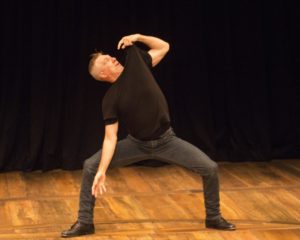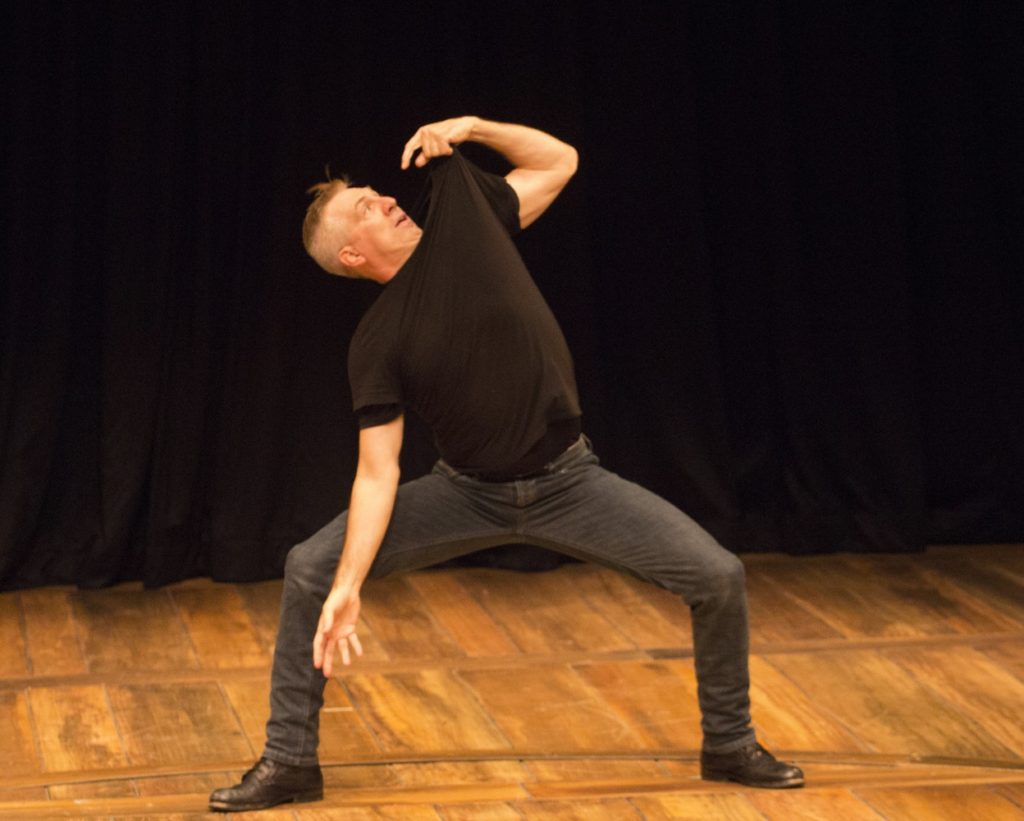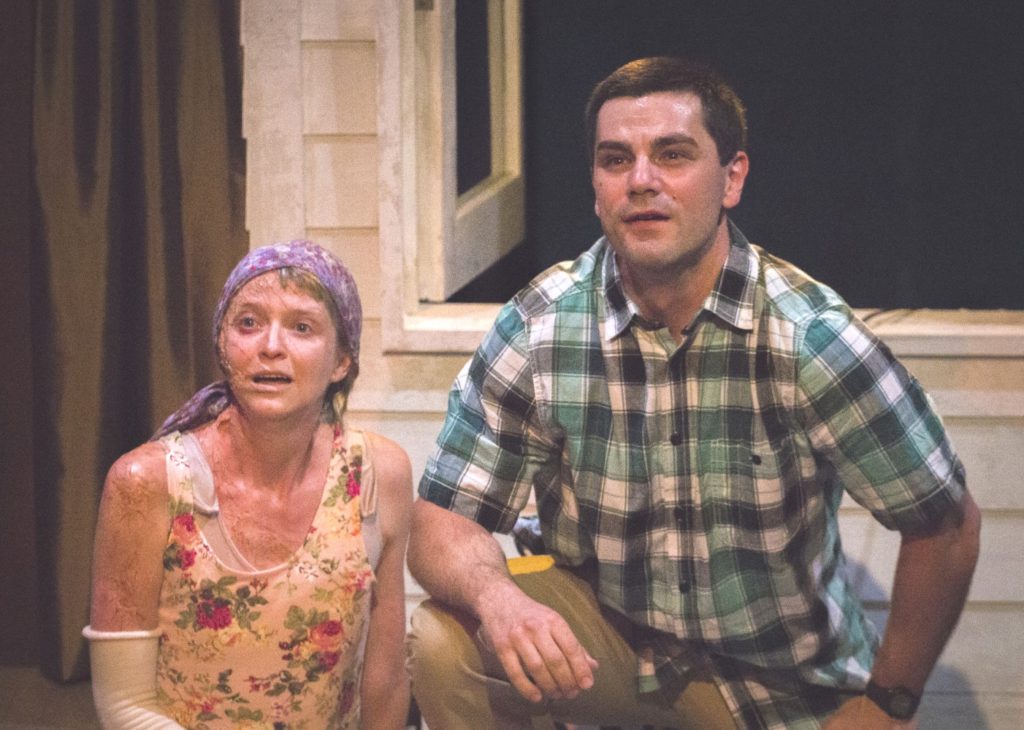“Theater is so subjective!” said my friend as we left the Bernstein Theatre at Shakespeare & Company. She was in tears, but I was relatively unmoved.
Ugly Lies the Bone, by Lindsey Ferrentino, takes an unflinching look at a searingly dramatic subject that’s too often hidden or ignored, in a sensitive production by Daniela Varon with strong performances. It’s about returning from the battlefield carrying scars both inside and out, a topic that’s getting increased and overdue attention on stage and screen. But unlike most treatments, in this case the homecoming soldier is a woman.
 In that respect, it’s similar to Donald Margulies’ Time Stands Still, which New Century Theater staged last month. The women at the center of both plays have been shattered by roadside bombs, but here the wounds are much worse. Jess has a shattered leg and arm, skin grafts over much of her body, and a ravaged face and scalp. She’s also depressed, angry and confused, at war with herself and everyone around her.
In that respect, it’s similar to Donald Margulies’ Time Stands Still, which New Century Theater staged last month. The women at the center of both plays have been shattered by roadside bombs, but here the wounds are much worse. Jess has a shattered leg and arm, skin grafts over much of her body, and a ravaged face and scalp. She’s also depressed, angry and confused, at war with herself and everyone around her.
All she wants, after two tours of duty in Afghanistan, is to return to a safe, familiar life in her hometown on Florida’s “space coast.” But the shuttle program is closing down and so is the town. The lover who left her when she reupped is married and working at a convenience store after layoffs at NASA, her sister Kacie has taken up with an amiable layabout, and Jess lashes out at all of them in frustration and despair.
She lives most of her days on the upper half of the 1–10 pain scale, relieved momentarily by a virtual-reality program that places her in a soothing snowscape to distract from the burning pain and memory of the explosion that took half her flesh.
Jess’s journey, from pain and resentment to provisional recovery – her emotional arc tracks her physical recuperation – is compelling, as are the performances that sustain it. Rory Hammond is Kacie, teetering between sympathy and exasperation. Dylan Chalfy is her affable boyfriend in a “Chillaholic” t-shirt and matching persona.
 I particularly enjoyed Hamish Allan-Headley as sweet, patient, charmingly tongue-tied Stevie, Jess’s ex-beau, who’s almost as lost as she is. And above all, there’s Christianna Nelson’s complex, heartrending performance as Jess, a turmoil of aching limbs and heart, every bitter sarcasm a cry of loneliness and confusion.
I particularly enjoyed Hamish Allan-Headley as sweet, patient, charmingly tongue-tied Stevie, Jess’s ex-beau, who’s almost as lost as she is. And above all, there’s Christianna Nelson’s complex, heartrending performance as Jess, a turmoil of aching limbs and heart, every bitter sarcasm a cry of loneliness and confusion.
I think what kept me from fully embracing this show was the script. You can trace the trajectory from the outset, and while there are poignant and even scalding passages, along with not a few laughs, too much of the dialogue is predictable and flat. There are also “Wait, what?” moments that jolt us out of the story. In the play’s key scene, for instance, when Jess and Stevie climb onto her roof to watch the last shuttle mission blast off, all I could think was, “Really? A woman whose PTSD is triggered by a lighter flame wants to see, hear and feel a rocket ship ignite?”
As subjective theater goes, Cry “Havoc!” is right up there. Playing in repertory with Ugly Lies the Bone, it’s an autobiographical one-man show, like many others, but unlike any other.
And like his play, Stephan Wolfert is a military veteran like many others, and unlike any other. He enlisted at age 18 to escape his stifling small Middle American town and oppressive family (alcoholic father, distant mother, brothers who beat him up for dancing, so he wouldn’t become a “faggot”). After six years in the army, AWOL and suffering from post-traumatic stress, he wandered into a small-town theater on a whim, and saw a play that literally changed his life.
In Shakespeare’s Richard III he recognized a soldier like himself – home from the battlefield and now a warrior without a battle, lost and angry and ready to explode – and on top of that, a guy with a deformed body and a halting gait, as Wolfert was as a teenager from a sports accident. “Now,” he says, “is the winter of our discontent.”
 Shakespeare is part of what makes this show utterly unique. Wolfert weaves the playwright’s words into his narrative, not grafted on as illustrations or acting set pieces, but a seamless part of the fabric, giving his enterprise, as Hamlet puts it, “pitch and moment.”
Shakespeare is part of what makes this show utterly unique. Wolfert weaves the playwright’s words into his narrative, not grafted on as illustrations or acting set pieces, but a seamless part of the fabric, giving his enterprise, as Hamlet puts it, “pitch and moment.”
The piece likewise blends the writer/performer’s own history into other returning solders’ tales from the battlefield, humanizing the grim statistics.
The military, he reports from experience, prepares recruits to shoot and kill unquestioningly (“When the blast of war blows in our ears, then imitate the action of the tiger”) – “labradored” into well-trained obedience, eager for the signal to “cry ‘Havoc!’ and let slip the dogs of war.”
“We’re wired for war,” he tells us, “but not unwired.” There are plenty of recruiters, but few “decruiters” to support the transition back into civvies.
You come back into your home community and, like Jess in Ugly Lies the Bone, nobody knows or understands what you’ve been through, you’re isolated and missing the comradeship that got you through the war zone (“We few, we happy few; we band of brothers”).
There are nightmares and alcoholism and multiplying suicides – at least one more, Wolfert assures us, since this performance began. He recalls his own near-death, sitting with a rifle’s muzzle against his chin but finally unable to pull the trigger (“Thus conscience does make cowards of us all”).
Some of the facts Wolfert shares I was aware of: One-third of women soldiers experience “military sexual trauma” and most of it goes unreported (“To whom should I complain? Did I tell this, who would believe me?”). Some came as a surprise: Only 10–15 percent of soldiers on the battlefield actually shoot to kill.
The other thing that makes the show unique is Wolfert himself. Blessed with boundless energy and a spacious heart, he weaves his ebullient personality and ingenious physicality into the piece as smoothly as the Shakespeare, leavening his sometimes harrowing narrative with sudden flashes of antic humor while embracing us all in his story (the houselights stay up throughout) and “laying bare his bosom.”
“This is me showing you the mess,” he said in the talkback that is an integral part of every performance, adding, “Theater is where you can show the mess.”
Photos by Ava G. Lindenmaier
& courtesy of Shakespeare & Company
If you’d like to be notified of future posts, email StageStruck@crocker.com






